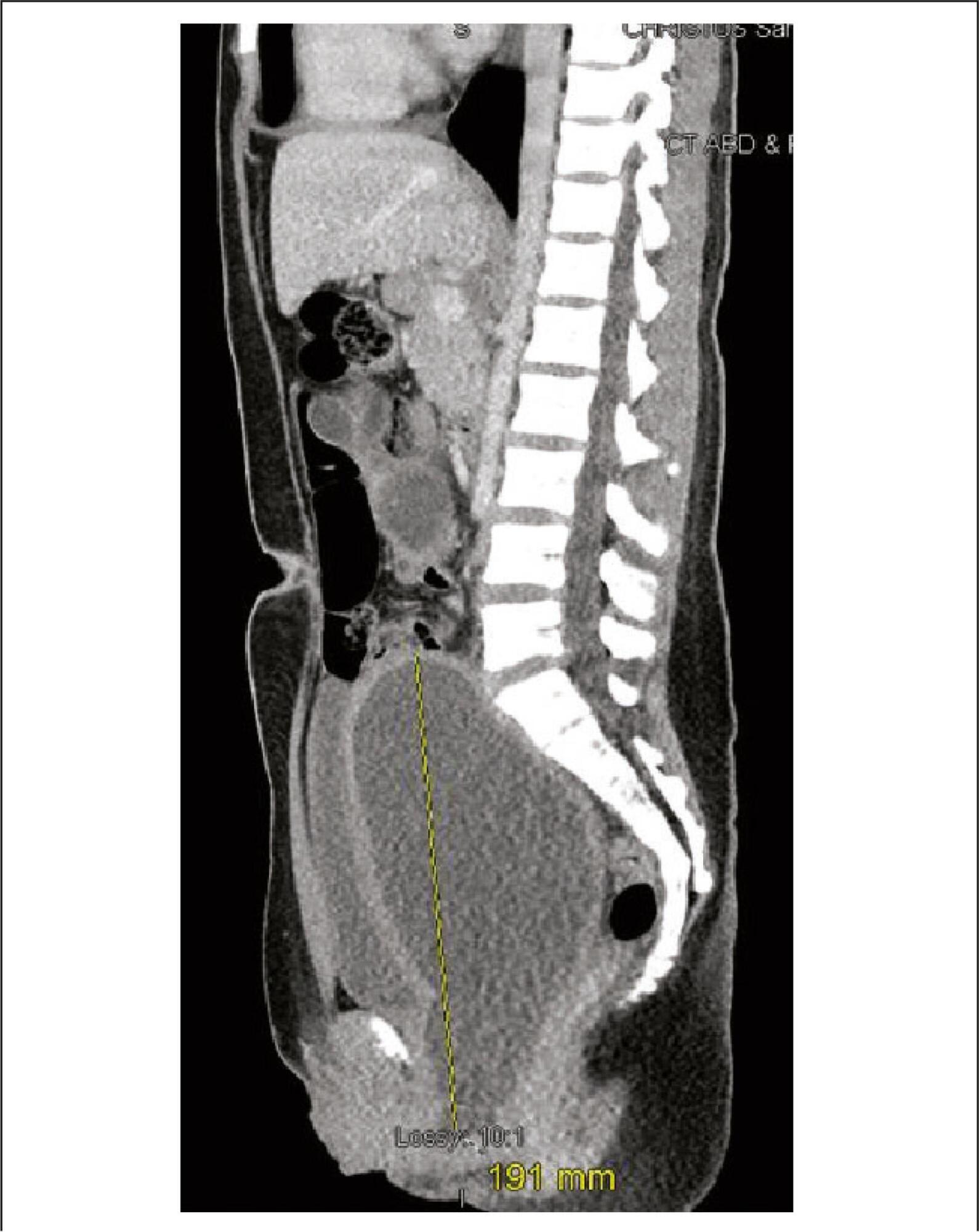-
Relato de Caso
Herlyn-Werner-Wunderlich syndrome: a case report
Revista Brasileira de Ginecologia e Obstetrícia. 2015;37(4):192-196
04-01-2015
Summary
Relato de CasoHerlyn-Werner-Wunderlich syndrome: a case report
Revista Brasileira de Ginecologia e Obstetrícia. 2015;37(4):192-196
04-01-2015DOI 10.1590/SO100-720320150005077
Views71See moreHerlyn-Werner-Wunderlich (HWW) syndrome is a rare congenital disorder of the Müllerian ducts in which there is uterus didelphys, obstructed hemivagina and unilateral renal agenesis. The most common presentation is an abdominal mass secondary to hematocolpos, pain and dysmenorrhea. However, in some cases, such as the one we present here, menses are normal due to an obstructed hemivagina, and diagnosis can be delayed. We describe evaluation and surgical management of a 13-year-old girl with this condition who was diagnosed by computed tomography (CT) scan and confirmed by pelvic ultrasound and surgical exploration, as well as a review of the literature.

-
Artigos Originais
Surgical and non-surgical treatment of vaginal agenesis: analysis of a series of cases
Revista Brasileira de Ginecologia e Obstetrícia. 2012;34(6):274-277
07-13-2012
Summary
Artigos OriginaisSurgical and non-surgical treatment of vaginal agenesis: analysis of a series of cases
Revista Brasileira de Ginecologia e Obstetrícia. 2012;34(6):274-277
07-13-2012DOI 10.1590/S0100-72032012000600006
Views71See morePURPOSE: This study aimed to evaluate the results of neovaginoplasty by a modified McIndoe-Bannister technique and by the non-surgical Frank technique. METHODS: This retrospective study was conducted on a convenience sample of 25 women with vaginal agenesis undergoing surgical or conservative treatment at an Infant-Pubertal Gynecology Outpatient Clinic. Data were obtained from the medical records. Fifteen women underwent the surgical McIndoe-Bannister modified technique Surgical Group, and 10 women underwent the non-surgical Frank technique Frank Group. The following parameters were considered for comparative analysis between the two samples: vaginometry, surgical and non-surgical complications, and sexual satisfaction after treatment. Sexual satisfaction was assessed by a simple question: How is your sex life? RESULTS: There were differences related to vaginal length before and after performing exercises in both Frank Group (initial vaginal length 2.4±2.0 cm versus 6.9±1.1 cm after treatment, p<0.0001) and Surgical Group (initial vaginal length 0.9±1.4 cm versus 8.0±0.8 cm after treatment, p<0.0001). Increased vaginal length was observed in Surgical Group compared to Frank Group (Frank Group=7.0±0.9 cm versus Surgical Group=8.0±0.8 cm, p=0.0005). Forty percent of Surgical Group women had surgical complications versus no complications with the Frank technique. All women reported to be satisfied with their sexual life. CONCLUSION: The present data indicate that both the surgical and Frank techniques are effective for the treatment of vaginal agenesis, resulting in the construction of a vagina that pewrmits sexual intercourse and sexual satisfaction. The favorable aspects of the Frank technique are related to its low cost and to the low rates of major complications.
-
Relato de Caso
Atipical form of Mayer-Rokitansky-Kuster-Hauser syndrome with renal malformation and skeletal abnormalities (MURCS association)
Revista Brasileira de Ginecologia e Obstetrícia. 2012;34(3):133-138
04-04-2012
Summary
Relato de CasoAtipical form of Mayer-Rokitansky-Kuster-Hauser syndrome with renal malformation and skeletal abnormalities (MURCS association)
Revista Brasileira de Ginecologia e Obstetrícia. 2012;34(3):133-138
04-04-2012DOI 10.1590/S0100-72032012000300008
Views81The atypical and more severe form of Mayer-Rokitansky-Kuster-Hauser syndrome (MRKH) or MRKH type II is also known as MURCS association, an acronym meaning aplasia/hypoplasia of Müllerian ducts (MU), congenital renal dysplasia (R) and cervico-thoracic dysplasia (CS). It affects female patients with normal karyotype and ovarian function, evolving to primary amenorrhea. It has an incidence of 1:50,000, but it is underestimated due to late diagnosis and undefined etiology. We describe the cases of a child and an adolescent in order to predict the diagnosis even in childhood, before the onset of amenorrhea. Patients had in common renal malformation, agenesis or hypoplasia of Müllerian derivatives and vertebral anomalies, establishing the diagnosis of MURCS. The relevance of this paper is to show the importance of further investigation when some of pathologic signs are present, researching correlated abnormalities in order to establish an early diagnosis and consequently to provide guidance to the patients and their families about the best way to conduct the case, including genetic counseling.
Key-words AbnormalitiesAmenorrheaCase reportsChromosome aberrationsKidneyMullerian ductsmultipleUterusVaginaSee more


